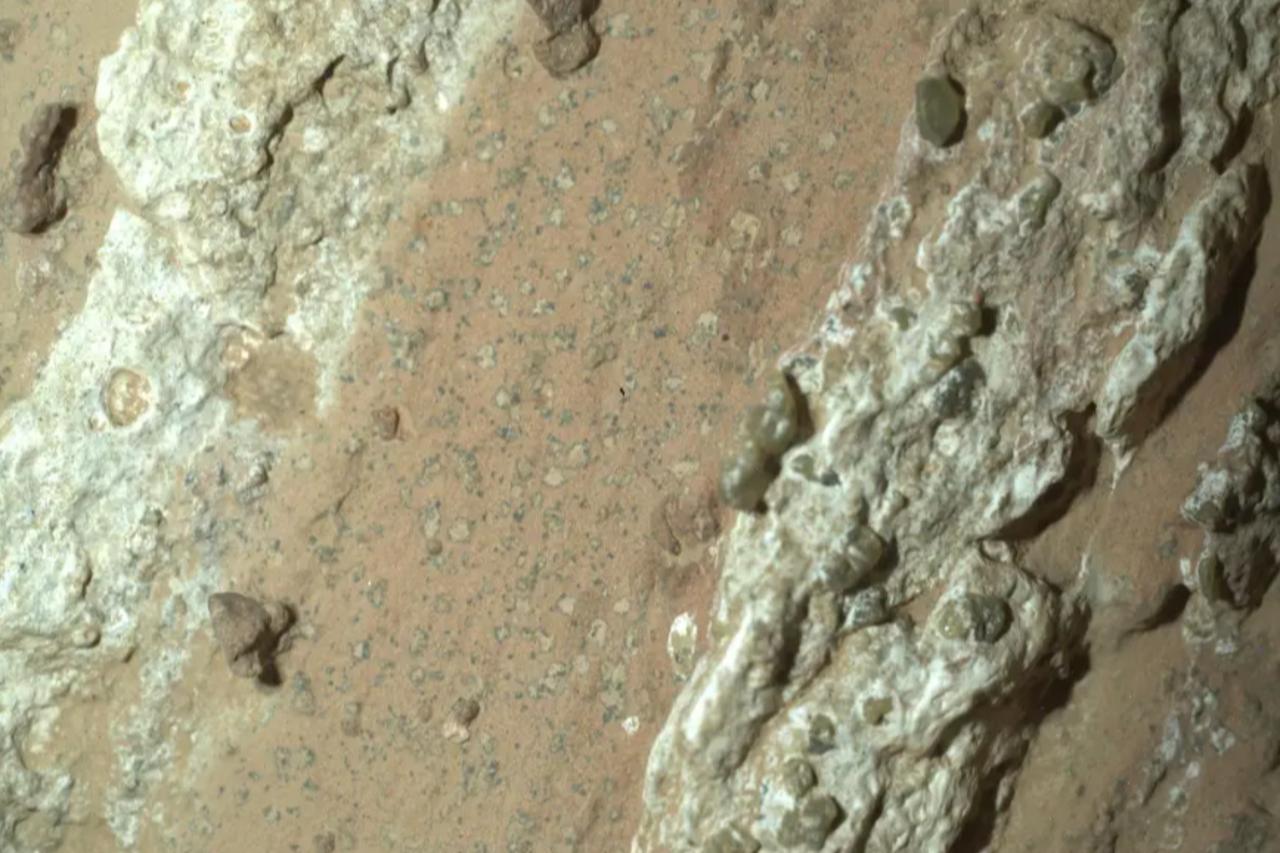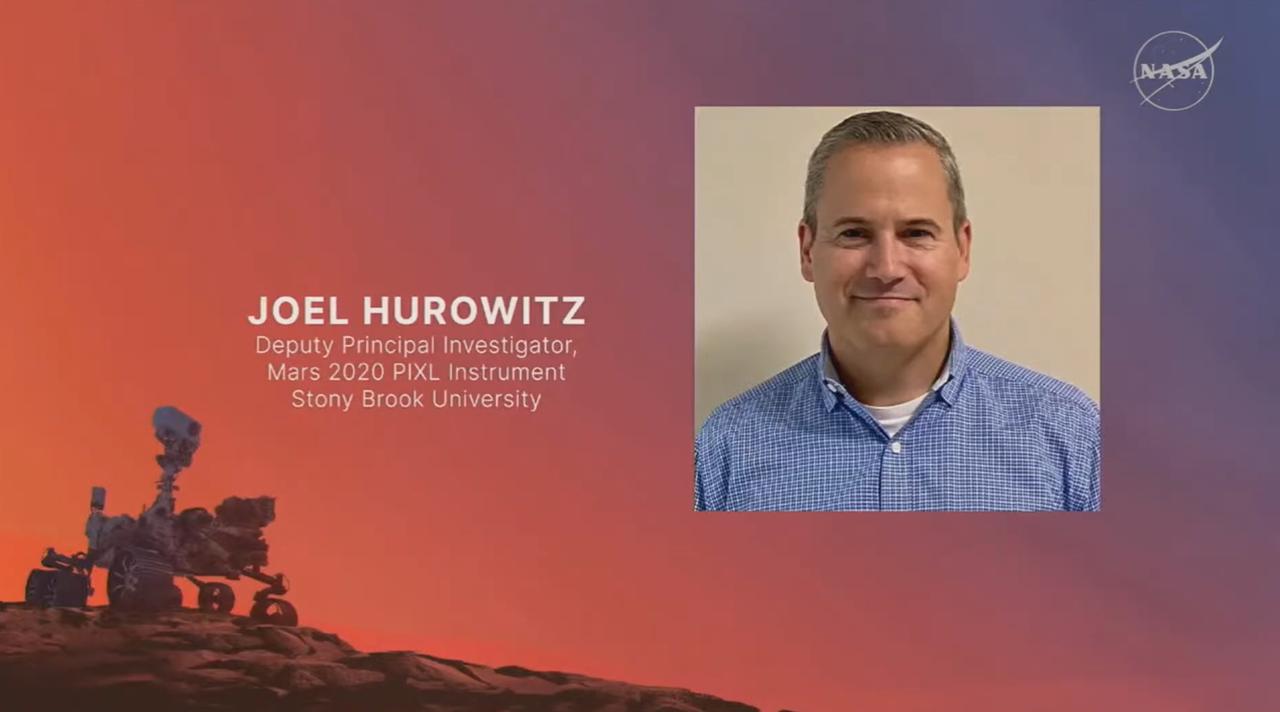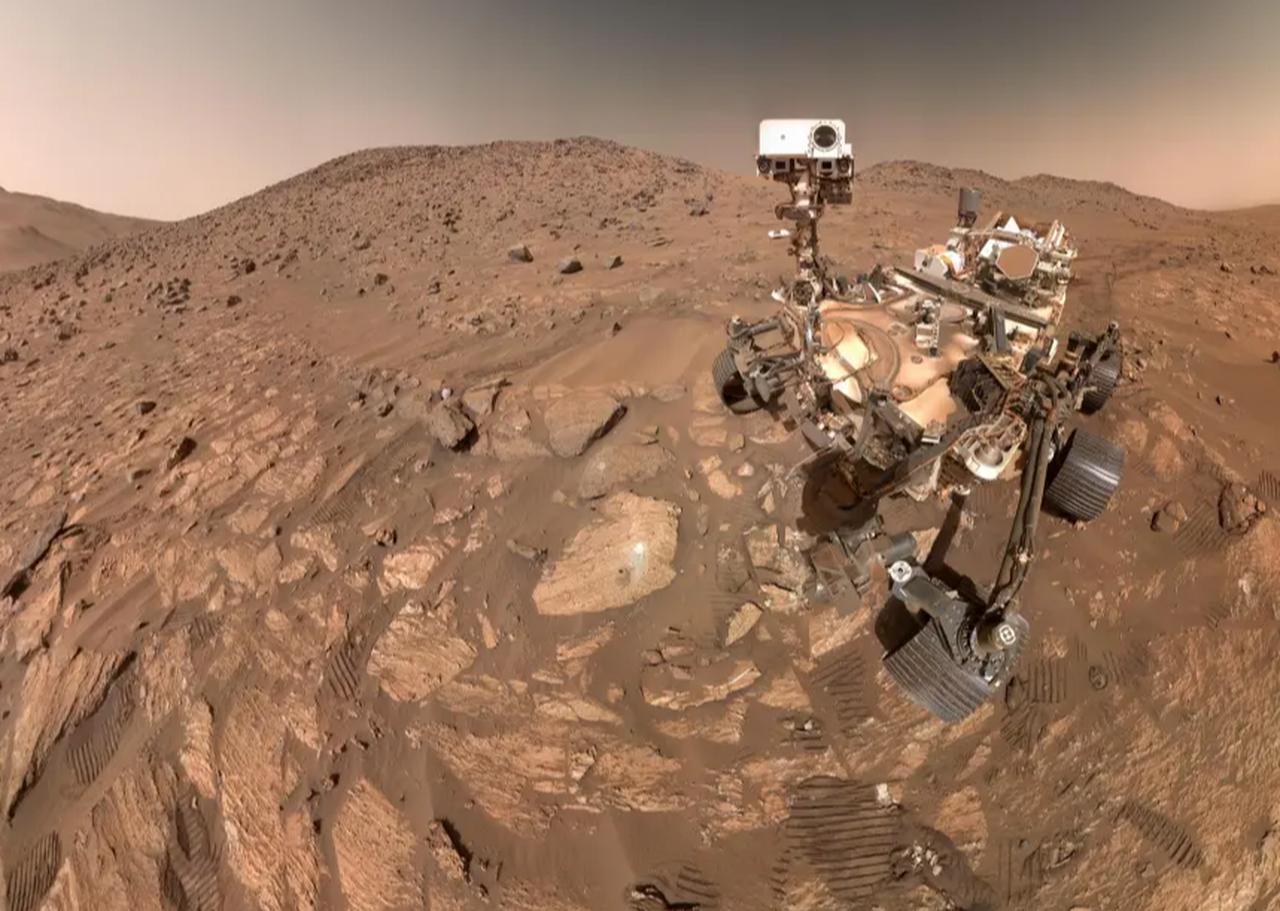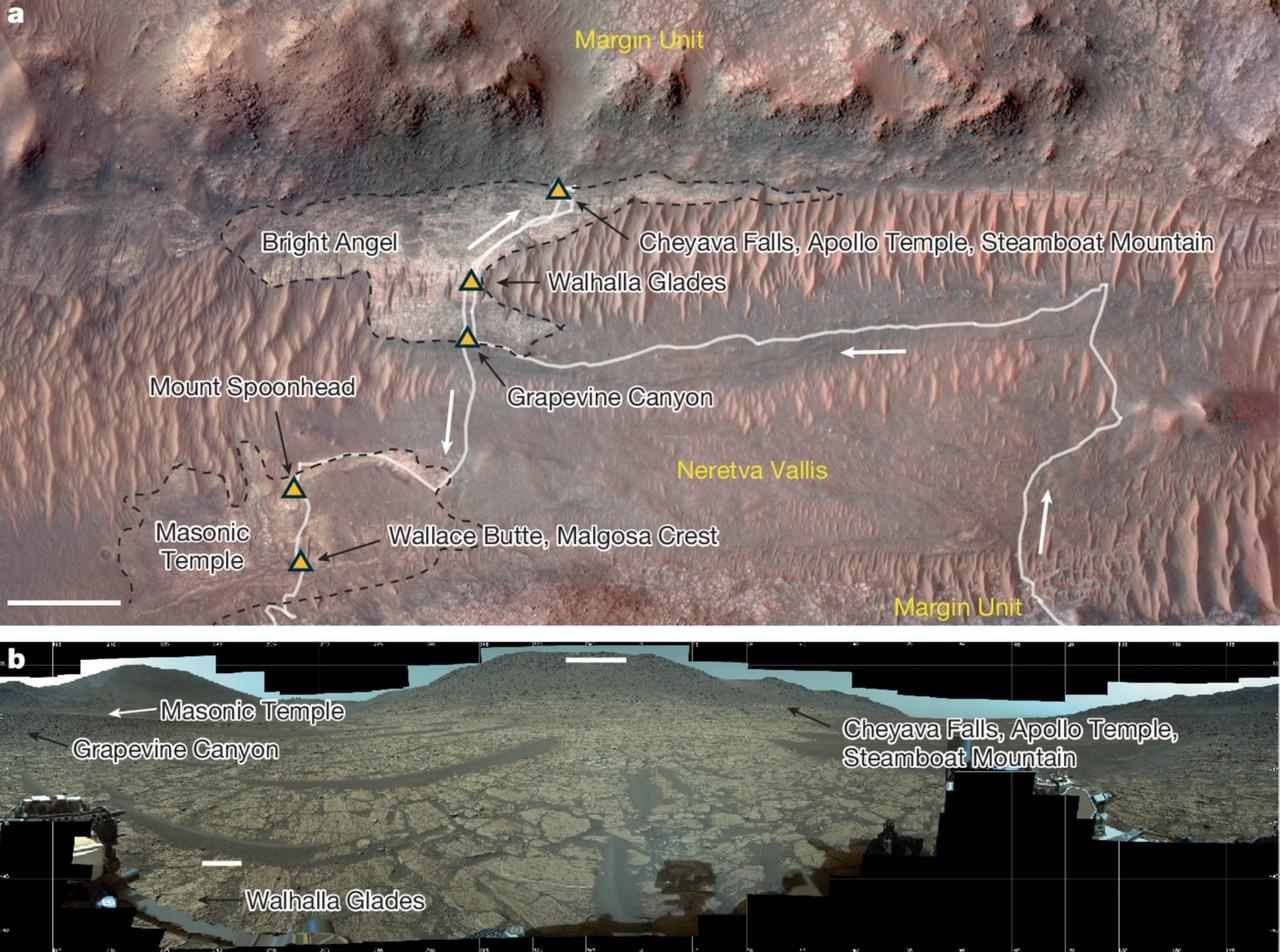
A rock core that NASA’s Perseverance rover collected from an ancient river channel in Jezero Crater may preserve a potential biosignature—a substance or structure that might have a biological origin but requires further evidence to confirm life.
The finding, described in a Nature paper, centers on a 2024 core nicknamed “Sapphire Canyon” drilled from a rock called “Cheyava Falls” in the Bright Angel formation.
In written answers shared exclusively with Türkiye Today, lead author Joel Hurowitz explained why the team considers the minerals they observed to be promising, what tests would come next, and how the result fits the mission’s goals.
This animation depicts water disappearing over time in the Martian river valley Neretva Vallis, where NASA’s Perseverance Mars takes the rock sample named “Sapphire Canyon” from a rock called “Cheyava Falls,” which was found in the “Bright Angel” formation. (Video via NASA)
Perseverance encountered Cheyava Falls while surveying Bright Angel, a cluster of rocky outcrops along Neretva Vallis—an ancient, water-carved valley about a quarter-mile (400 meters) wide that once fed Jezero Crater.
Using the PIXL and SHERLOC instruments, the team spotted colorful patterns that higher-resolution images revealed as “leopard spots” and “poppy seed” nodules.
These textures, arranged along reaction fronts—places where chemical reactions propagate through rock—carry the signatures of two iron-bearing minerals: vivianite (a hydrated iron phosphate) and greigite (an iron sulfide).
On Earth, vivianite occurs in sediments, peat bogs, and near decaying organic matter, while certain microbes can produce greigite.

Hurowitz told Türkiye Today that the minerals appear to have formed at low, near-ambient temperatures in a habitable lake-bed setting where iron-, phosphate-, and sulfate-rich mud was deposited together with organic carbon.
On Earth, similar mineral-organic pairings commonly form as by-products of microbial metabolism.
He added that the team worked to rule out non-biological scenarios—such as heating the same ingredients above 120 degrees Celsius (248 degrees Fahrenheit)—but emphasized that rover data alone cannot fully exclude abiotic pathways.
The rocks do not show clear signs of sustained high temperatures or acidity, though the team cannot confirm whether organics present could have catalyzed the reactions at low temperatures without life.
“We consider these minerals to be potential biosignatures because they appear to have formed in a habitable sedimentary environment at ambient environmental temperatures,” Hurowitz said, noting that the evidence is compelling but not definitive without laboratory analyses on Earth.

There is little more the rover can do to discriminate biology from chemistry in situ, Hurowitz said.
If Sapphire Canyon returns to Earth, one of the first steps would be isotopic analyses of iron, sulfur, and carbon to check for patterns that often reflect biological processing.
NASA underscores that extraordinary astrobiological claims demand rigorous standards; the agency points to tools such as the Confidence of Life Detection (CoLD) scale, which lays out seven benchmarks to gauge how strongly a dataset supports a life interpretation.
“Getting such a significant finding as a potential biosignature on Mars into a peer-reviewed publication is a crucial step,” said Perseverance project scientist Katie Stack Morgan, while stressing that abiotic explanations cannot yet be ruled out.
NASA described the result as a breakthrough in the search for ancient life, noting that Bright Angel’s fine-grained clays and silts are the kinds of sediments that, on Earth, are excellent at preserving microbial traces.
“This finding by Perseverance… is the closest we have ever come to discovering life on Mars,” said acting NASA Administrator Sean Duffy, adding that the agency will continue to pursue “Gold Standard Science” as it advances exploration goals.
Nicky Fox, who leads NASA’s Science Mission Directorate, told international media that the outcome reflects strategic planning to fly a mission capable of delivering exactly this type of science and that peer review opens the data to the wider community to test its biological potential.

The textures and minerals appear in some of the youngest sedimentary rocks examined by the mission, challenging the assumption that only older terrains would retain signals of ancient life.
That raises the possibility that habitable conditions may have persisted later in Mars’ history—or longer—than previously thought, while also suggesting that older layers could still hold subtle clues that are simply harder to detect.